Sukanya Guha, Data Analyst, Registry Trust
Friday, 5th August 2022
In Q3 2021, Registry trust conducted data analysis which identified a correlation between a business experiencing financial distress, in this case a CCJ, and then going on to file for insolvency.
Registry Trust has recently conducted follow up analysis utilising commercial insolvency data obtained from The Gazette which provides the official public record of statutory and non-statutory notices including commercial insolvency data.
This current analysis confirms the correlation identified in 2021. Furthermore, the dramatic increase in the number of both CCJs and insolvencies – likely due to the end of government Covid support, has enabled the identification of business sectors at higher risk for insolvency. During the analysis which considered the most recent six years, 487 insolvent companies were matched with 1,789 commercial monetary judgments. The year-on-year comparison shows a 1216% increase in the number of companies showing a correlation between receiving a CCJ and going on to becoming insolvent.
An additional finding was that of those 487 insolvent companies, 172 (35%) became insolvent after receiving just one judgment, an increase of 13% year-on-year. The average number of days between receiving a judgment and insolvency for these companies was 213 days or 7 months.
Companies receiving more than one judgment became insolvent within an average of 322 days or 10.5 months. This average was calculated from the date of the initial judgment.
The following graphs illustrate the number of days from first judgment to insolvency with anonymised company names categorised into sectors.
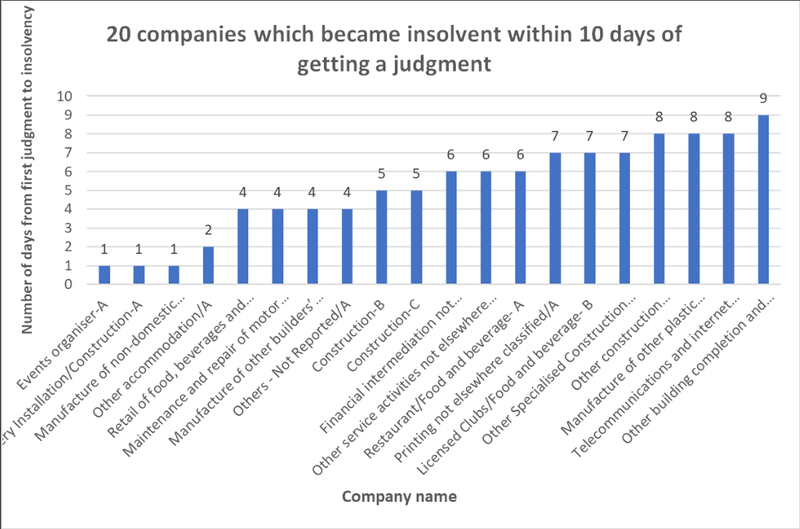
The shortest journey from judgment to insolvency was observed in the following three sectors:
- Event’s organiser
- Joinery installation/Construction
- Manufacture of non-domestic cooling and ventilation equipment/Manufacturing
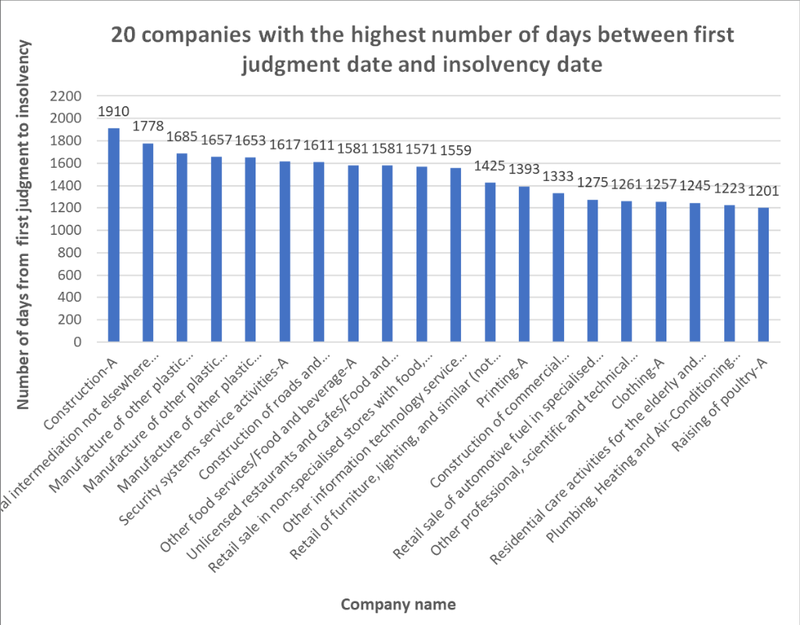
The longest journey from CCJ to insolvency belonged to the ‘Construction’ sector.
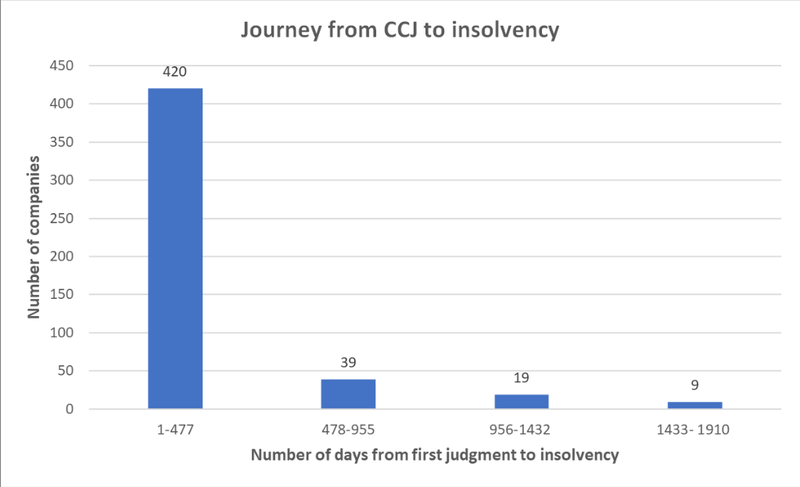
420 companies became insolvent in the first quarter (within 477 days) and 39 companies became insolvent in the second quarter (within 955 days). This means 94% of companies became insolvent within the first 955 days of receiving a judgment. This is an increase of 16% year-on-year.
Our previous research identified a correlation between the value of a judgment and the CCJ to insolvency journey. When the value of a judgment increases, the number of days it takes for a company to become insolvent decreases. This correlation is corroborated by our most recent analysis.
Our analysis shows that for the 20 companies having the highest judgment value (first judgment only), the CCJ to insolvency journey averaged 231 days. Conversely, for the 20 companies having the lowest judgment value (first judgment only), the CCJ to insolvency journey averaged 460 days.
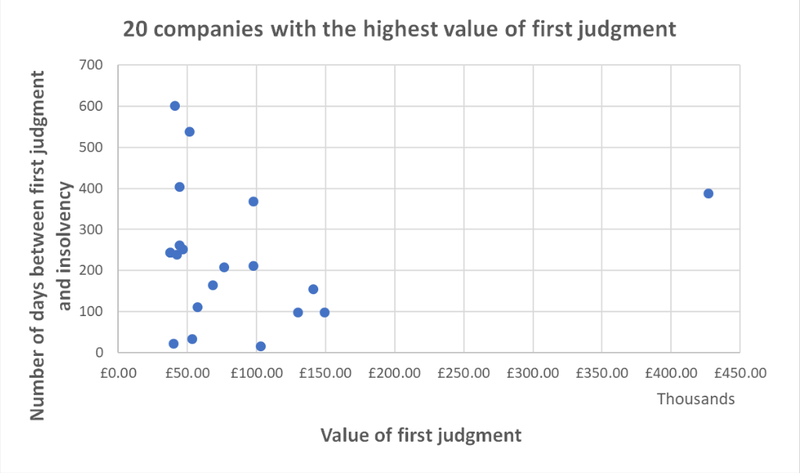
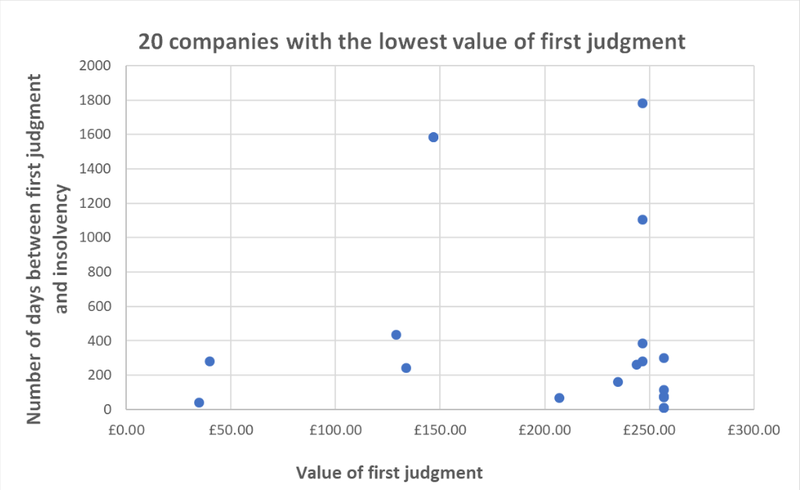
As an early indicator of financial vulnerability, CCJs are a reliable source in the identification of at-risk businesses. Understanding the CCJ to insolvency journey, and making proactive course corrections, will potentially prevent the insolvency of individual business and possibly significant segments of specific business sectors. Registry Trust data is the ‘canary in the coal mine’ with respect to providing an early warning to entities with an interest in the probability of a business continuing on the journey to insolvency.
To keep up to date with the latest from Registry Trust, click here to subscribe to our monthly updates and/or follow us on Twitter and LinkedIn. You can also follow our public website TrustOnline on Facebook and LinkedIn for regular useful updates about CCJs, credit scores and more.